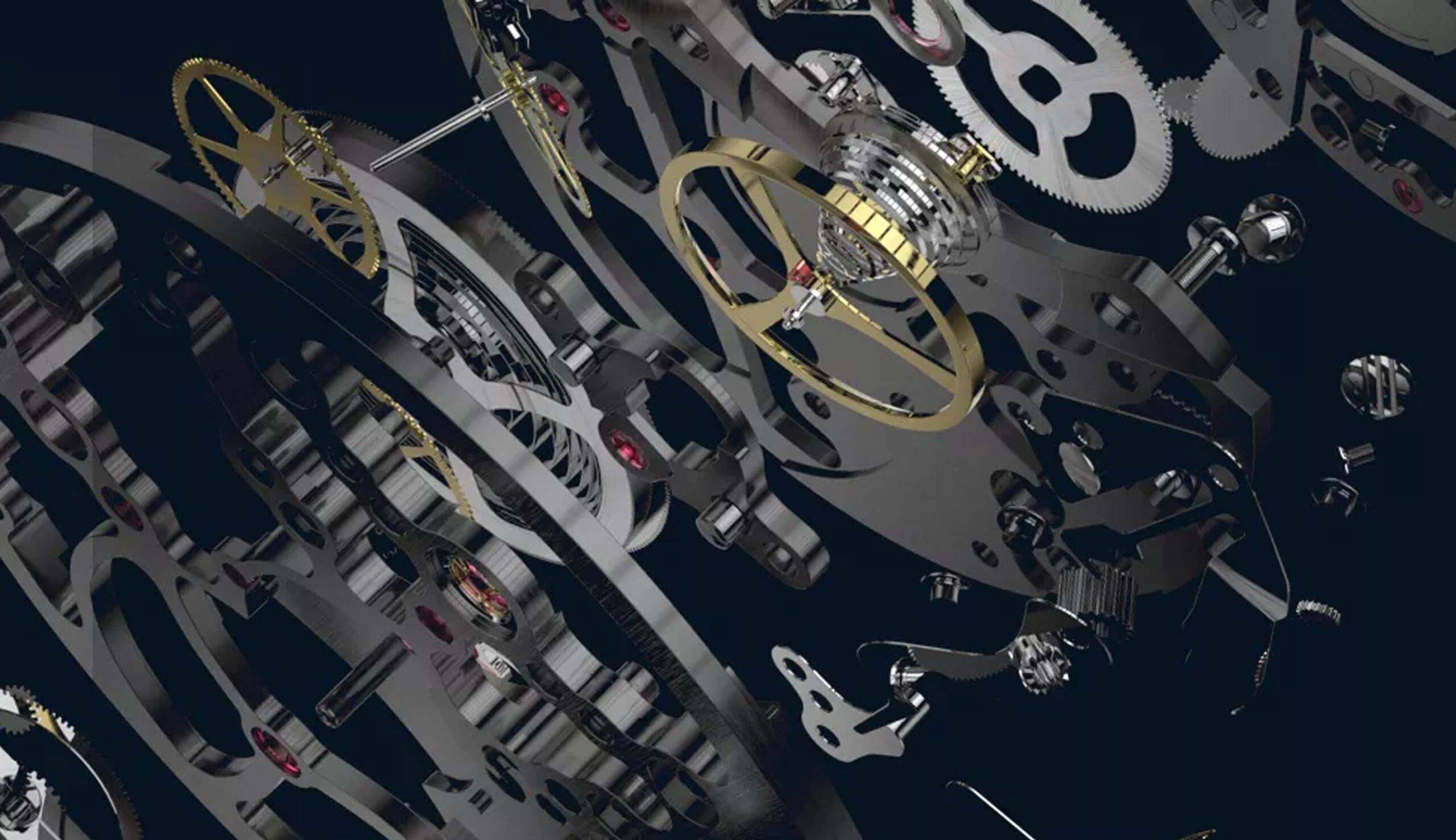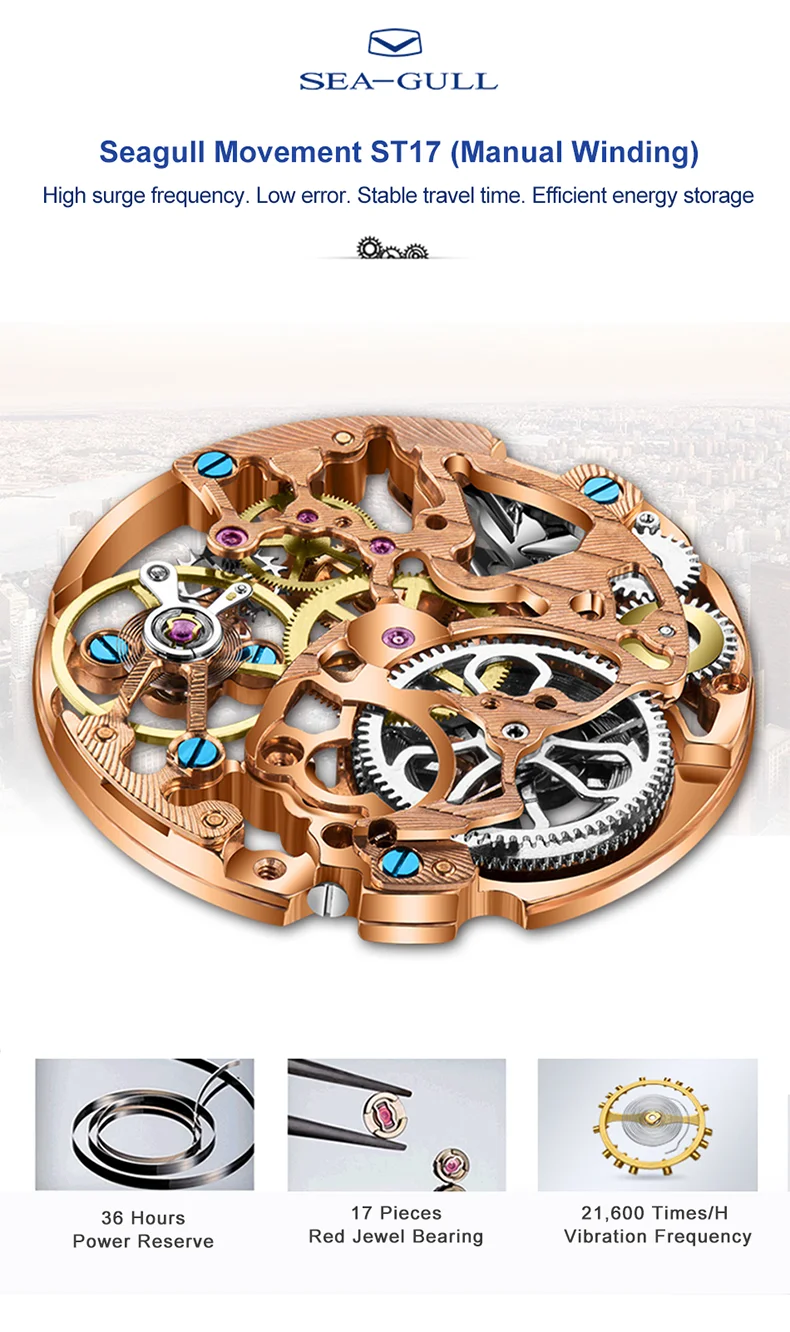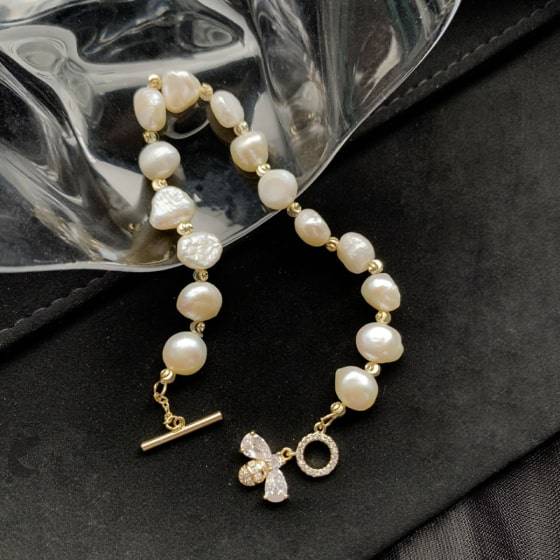Comprehensive Guide to Watch Movements: Types, Brands, Models, History

“Comprehensive Guide to Watch Movements: Types, Brands, Models, History”
Watch movements are the heart and soul of a timepiece, and there are many different types available on the market today. From the traditional mechanical movement to the more modern quartz movement, each has its own set of benefits and drawbacks. In this comprehensive guide, we’ll take a closer look at the various types of watch movements available, watch movement manufacturers, explore the pros and cons of each, and delve into the history and notable brands and models associated with them. Whether you’re a seasoned collector or just curious about the inner workings of watches, this guide has something for everyone.

Mechanical Movement:
A mechanical movement is a type of watch movement that is powered by a spring that must be wound by hand or automatically through the motion of the wearer’s wrist. This type of movement is considered traditional and is often found in high-end luxury watches.
Brands that use Mechanical Movement:
- Rolex
- Omega
- Patek Philippe
- Audemars Piguet
- Jaeger-LeCoultre
- Panerai
- IWC
- A. Lange & Söhne
Chinese manufacturers of Mechanical Movement:
Models and names of Mechanical Movements:
- Rolex Calibre 3135
- Omega Calibre 8500
- Patek Philippe Calibre 324 S C
- Audemars Piguet Calibre 3120
- Jaeger-LeCoultre Calibre 849
- Panerai Calibre P.3000
- IWC Calibre 79320
- A. Lange & Söhne Calibre L094.1
Explanation of Mechanical Movement:
A Mechanical Movement is more complex than Quartz Movement, it’s require more parts and more skill to manufacture. The main benefit of a mechanical movement is that it is considered a traditional and high-end type of movement, often found in luxury watches. It also tends to have a longer lifespan than a quartz movement. However, one drawback is that it requires regular maintenance and servicing. The story behind the mechanical movement is that it’s the first type of movement that was used in watches since the 16th century, it’s considered the heart of the watch, and it’s the most traditional and elegant type of movement.
Benefits:
- Considered traditional and high-end
- Longer lifespan
- No battery replacement required
Drawbacks:
- Requires regular maintenance and servicing
- More complex and difficult to manufacture
- More expensive than Quartz movements
Automatic Movement:
An automatic movement, also known as a self-winding movement, uses the motion of the wearer’s wrist to wind the mainspring and power the watch. This means that the watch does not need to be manually wound, as long as it is worn regularly. Automatic movements have become increasingly popular in recent years, as they offer the convenience of a quartz movement with the craftsmanship and beauty of a mechanical movement.
Brands that use Automatic Movement:
- Rolex
- Omega
- Breitling
- Patek Philippe
- Panerai
- IWC
- Audemars Piguet
- TAG Heuer
Chinese Manufacturers using Automatic Movement:
- Sea-Gull
- Beijing Watch Factory
- Shanghai Watch Factory
Watch Models using Automatic Movement:
- Rolex Submariner
- Omega Seamaster
- Breitling Navitimer
- Patek Philippe Calatrava
- Panerai Luminor
- IWC Pilot’s Watch
- Audemars Piguet Royal Oak
- TAG Heuer Carrera
Names of Automatic Movements:
- ETA 2824-2
- Sellita SW200
- Miyota 9015
- Seagull ST2130
Explanation of Automatic Movement:
The main benefit of an automatic movement is that the watch does not need to be wound manually, as long as it is worn regularly. This is a convenience that many people appreciate. Automatic movements also tend to be more accurate than manual wind movements, and they are often considered to be more reliable. However, they do require more maintenance and servicing than quartz movements. Additionally, when the watch is not worn regularly, the power reserve will decrease, and the watch will need to be manually wound or placed on a winder to keep it running.
Benefits:
- No need to manually wind the watch, as it winds itself through the natural motion of the wearer’s wrist.
- Generally more accurate and reliable than manual-wind movements.
- Long-lasting power reserve, some can run for days.
Drawbacks:
- The watch needs to be worn regularly to keep it running
- More maintenance and servicing is required
- Higher cost compared to quartz movement.
Story Behind Automatic Movement:
The first automatic movement was invented by John Harwood in 1923. Harwood’s design replaced the manual winding mechanism with a rotor, which was powered by the movement of the wearer’s wrist. This design was patented and produced by the Swiss watch company Omega in 1933, and it quickly became popular among watchmakers. Today, automatic movements are used in a wide variety of watches, from luxury brands to more affordable options, and they are considered to be one of the most advanced and reliable types of watch movement available.
Quartz Movement:
Quartz movements are the most common type of movement found in watches today. They use a battery as a power source and a quartz crystal to keep time. The quartz crystal oscillates at a very high frequency, which is then converted into a stable electrical signal that drives the hands of the watch. Quartz movements are known for their high accuracy and low maintenance, making them popular with both consumers and manufacturers.
Brands that use Quartz Movement:
- Seiko
- Casio
- Citizen
- Bulova
- Timex
- Pulsar
- Chinese manufacturers such as Sea-Gull, Parnis, and JBW
Watch Models with Quartz Movement:
- Seiko 5 Automatic
- Casio G-Shock
- Citizen Eco-Drive
- Bulova AccuSwiss
- Timex Weekender
- Pulsar Solar
- Chinese manufacturers such as Sea-Gull, Parnis, and JBW all have a wide range of watch models that use quartz movement.
Benefits of Quartz Movement:
- High accuracy
- Low maintenance
- Battery operated, no winding needed
- Widely available and affordable
Drawbacks of Quartz Movement:
- Battery replacement required every 1-2 years
- Lack of mechanical complexity and craftsmanship compared to mechanical movements
- Quartz movements are widely used, thus there are less exclusivity
Story Behind Quartz Movement:
Quartz movement is a type of watch movement that uses a battery as a power source and a quartz crystal to keep time. It is known for its high accuracy, low maintenance and widely available. However, it has drawbacks such as battery replacement required every 1-2 years and less exclusivity.
Tourbillon Movement:
A tourbillon movement is a type of mechanical movement that features a rotating escapement, which helps to counteract the effects of gravity on the accuracy of the watch. This type of movement was first invented by Abraham-Louis Breguet in the late 18th century and is considered one of the most complex and challenging movements to manufacture.
Brands that use Tourbillon Movement:
-Breguet -Vacheron Constantin -Audemars Piguet -Patek Philippe -Jaeger-LeCoultre -F.P. Journe -Greubel Forsey -A. Lange & Söhne -Richard Mille
Chinese manufacturers:
-Sea-Gull -Ming -Parnis
Tourbillon movement models:
-Breguet Tourbillon Extra-Plat 5367 -Vacheron Constantin Tourbillon Chronograph -Audemars Piguet Tourbillon Chronograph -Patek Philippe Tourbillon Chronograph -Jaeger-LeCoultre Master Grande Tradition Tourbillon Cylindrique -F.P. Journe Tourbillon Souverain -Greubel Forsey Tourbillon 24 Secondes -A. Lange & Söhne Tourbillon “Pour le Mérite” -Richard Mille Tourbillon RM 56-02 Sapphire
Benefits of Tourbillon Movement:
- High accuracy, as the tourbillon compensates for the effects of gravity on the movement.
- High level of craftsmanship and skill required to create the movement, making it a highly sought-after feature in luxury watches.
- Aesthetically pleasing, as the tourbillon is often exposed on the dial of the watch.
Drawbacks of Tourbillon Movement:
- High cost, as the tourbillon movement is one of the most complex and challenging to manufacture.
- Increased power consumption, as the tourbillon requires more energy to operate.
- Reduced reliability, as the tourbillon movement is more delicate and sensitive than other types of movements.
Story behind Tourbillon Movement:
The tourbillon was invented by Abraham-Louis Breguet in the late 18th century as a solution to the problem of gravity affecting the accuracy of pocket watches. Breguet’s invention featured a rotating cage for the escapement, which rotated the escapement and balance wheel in different positions to counteract the effects of gravity. The tourbillon quickly became a highly sought-after feature in luxury watches, and today it remains one of the most challenging and complex movements to manufacture.
Kinetic Movement:
A Kinetic movement, also known as an automatic-quartz movement, is a hybrid technology that combines the accuracy of a quartz movement with the self-winding capability of an automatic movement. It uses the motion of the wearer’s wrist to generate power, which is stored in a rechargeable battery. This allows the watch to run without the need for a traditional battery change.
Brands that use Kinetic Movement:
- Seiko
- Citizen
- G-Shock
Chinese manufacturers that use Kinetic Movement:
- Parnis
- Invicta
Watch models that use Kinetic Movement:
- Seiko Kinetic SKA371
- Citizen Eco-Drive BM8180-03E
- G-Shock Rangeman GW9400
Benefits of Kinetic Movement:
- Energy efficient and eco-friendly
- No need for battery changes
- Longer power reserve compared to traditional quartz movements
Drawbacks of Kinetic Movement:
- More expensive than traditional quartz movements
- May not work as well if the watch is not worn frequently
The story behind the Kinetic Movement:
is that it was first developed by Seiko in the 1980s as an alternative to the traditional battery-powered quartz movement. Seiko wanted to create a watch that would be more environmentally friendly and require less maintenance for the consumer. The first Kinetic watch was released in 1986 and was called the “AGM” (Auto-Generator System). It has since evolved and improved over the years to become the reliable and efficient technology it is today.
Solar-powered Movement:
A solar-powered movement, also known as a solar movement or eco-drive movement, is a type of watch movement that uses energy from the sun to power the watch. This type of movement is becoming increasingly popular among watch manufacturers, as it eliminates the need for frequent battery replacements.
Brands that use Solar-powered Movement:
- Citizen
- Seiko
- Casio
- Bulova
- Fossil
- Patek Philippe
- Rolex
Chinese Manufacturers:
- Sea-Gull
Watch Models:
- Citizen Eco-Drive
- Seiko Solar
- Casio Pro Trek
- Bulova Precisionist Solar
- Fossil Solar
Name of the Movement:
Eco-Drive, Solar
Explanation of Movement:
A solar-powered movement uses a small solar panel located on the dial or under the dial to convert light into electrical energy. This energy is stored in a rechargeable battery, which powers the watch. The benefits of a solar-powered movement include eliminating the need for battery replacements and being more environmentally friendly. One of the drawbacks is that if the battery is not recharged, the watch will stop working.
Benefits:
- No need to replace batteries
- Environmentally friendly
- Long battery life
Drawbacks:
- Can be affected by low light conditions
- Battery may need to be replaced after a few years
- Can be affected by exposure to strong light sources
Story behind the Solar-powered Movement:
The first solar-powered watch was developed by the Citizen Watch Company in 1976, using technology that they had developed for use in calculators. The Eco-Drive technology was a significant breakthrough in the watch industry, as it eliminated the need for battery replacements, and it was also a more environmentally friendly solution. Since then, many other watch manufacturers have adopted this technology and have continued to improve upon it. Solar-powered watches are now popular with consumers who appreciate their convenience and environmental benefits.
Minute Repeater Movement:
A minute repeater movement is a type of mechanical movement that chimes the time audibly on demand. It is activated by a slide or a button, and it chimes the hours, quarter hours, and minutes. This type of movement is considered to be one of the most complex and intricate movements in watchmaking, and it requires a high level of skill and precision to manufacture.
Brands that use this movement:
- Patek Philippe
- Audemars Piguet
- Vacheron Constantin
- Breguet
- A. Lange & Söhne
- F.P. Journe
Chinese manufacturers:
- Ming
- Sea-Gull
Watch models or names:
- Patek Philippe Ref. 5531R
- Audemars Piguet Royal Oak Concept Supersonnerie
- Vacheron Constantin Traditionnelle Minute Repeater Tourbillon
- Breguet Classique 7787
- A. Lange & Söhne Zeitwerk Striking Time
- F.P. Journe Chronomètre à Résonance
Name of the movement:
Minute Repeater
Explanation of movement:
The minute repeater movement is a highly complicated mechanical movement. It chimes the time audibly on demand, activated by a slide or button, chimes the hours, quarter hours, and minutes. This movement is considered one of the most complex and intricate movements in watchmaking, and it requires a high level of skill and precision to manufacture.
Benefits of Minute Repeater:
- The minute repeater movement allows the wearer to hear the time audibly, which is particularly useful in low-light conditions or for people with visual impairments.
- It is considered a highly sought-after complication, and a minute repeater watch is often considered a valuable collector’s item.
- The chime of a minute repeater watch can be considered a work of art in itself, and the sound it produces is often compared to music.
Drawbacks of Minute Repeater:
- Minute repeater watches are expensive and can cost tens of thousands of dollars.
- The chime of a minute repeater watch can be considered a work of art in itself, and the sound it produces is often compared to music.
- These watches are also very complex and require regular servicing and maintenance.
- They are also relatively delicate and should be handled with care.
Story behind the watch movement:
The minute repeater movement has a long history, with the earliest known examples dating back to the 18th century. The first minute repeater watches were pocket watches, and they were primarily used by the wealthy and powerful as a status symbol. The movement was invented to allow the wearer to tell the time in the dark or in situations where looking at the watch was not possible.
Perpetual Calendar Movement:
A perpetual calendar movement is a type of watch movement that automatically adjusts for the different number of days in a month, including leap years. This type of movement is considered to be a complication in watchmaking and is often found in high-end watches.
Brands that use Perpetual Calendar Movement:
Patek Philippe A. Lange & Söhne Vacheron Constantin Jaeger-LeCoultre Audemars Piguet Patek Philippe Perpetual Calendar Chronograph A. Lange & Söhne Lange 1 Perpetual Calendar Vacheron Constantin Overseas Perpetual Calendar Jaeger-LeCoultre Master Perpetual Calendar Audemars Piguet Royal Oak Perpetual Calendar
Chinese Watch Models:
Sea-Gull Ming Shanghai
Name of the Movement:
Perpetual Calendar
Explanation of Movement:
A perpetual calendar movement uses a complex system of gears and levers to automatically adjust the date, day, month, and year, including leap years. This type of movement requires a high level of precision and skill to manufacture, and it is often found in high-end watches. The benefits of a perpetual calendar movement include its precision and accuracy in keeping track of the date, and it is also considered a prestige complication in watchmaking. One of the drawbacks is that it can be more expensive and complex to repair or service.
Benefits:
Automatically adjusts for different number of days in a month High precision and accuracy Considered a prestige complication in watchmaking
Drawbacks:
Can be more expensive Can be more complex to repair or service
Story behind the Perpetual Calendar Movement:
The first known perpetual calendar movement was developed by Thomas Mudge in 1764. Since then, many watchmakers have continued to improve upon this complication, with some of the most notable advancements coming from Patek Philippe in the early 20th century. The perpetual calendar movement is considered one of the most prestigious complications in watchmaking and is often found in high-end watches. It is appreciated by watch enthusiasts for its precision and accuracy in keeping track of the date, as well as its status as a prestige complication.
Hybrid Movement:
A hybrid movement is a type of watch movement that combines traditional mechanical movement with smartwatch technology. This allows for the watch to have the precision and accuracy of a mechanical movement, as well as the added functionality of a smartwatch.
Brands that use Hybrid Movement:
Frederique Constant Montblanc Alpina Chinese Manufacturers: N/A Watch Models:
Frederique Constant Hybrid Manufacture Montblanc Summit 2 Alpina AlpinerX Name of the Movement: Hybrid Manufacture, Smart Mechanical
Explanation of Movement:
A hybrid movement uses a mechanical movement as its base, but also includes smartwatch technology such as activity tracking, notifications, and other connected features. This allows the watch to have the traditional feel and craftsmanship of a mechanical watch, while also offering the convenience and functionality of a smartwatch. The benefits of a hybrid movement include having the best of both worlds, combining traditional watchmaking with modern technology. One of the drawbacks is that the added technology may increase the price of the watch.
Benefits:
Combines traditional watchmaking with modern technology Provides the best of both worlds Convenient and functional
Drawbacks:
May be more expensive than traditional mechanical watches Additional technology may add complexity.
Story behind the Hybrid Movement:
The first hybrid movement was developed by Frederique Constant in 2016, with the launch of their Hybrid Manufacture watch. The watch was designed to combine the traditional craftsmanship of a mechanical watch with the convenience and functionality of a smartwatch. This marked a new era in watchmaking, where traditional and modern technology were combined to create something new and innovative. Since then, many other watch manufacturers have followed suit, offering their own versions of hybrid watches. The popularity of these watches continues to grow among consumers who appreciate the combination of traditional and modern features.
Smartwatch Movement:
A smartwatch movement is a type of watch movement that uses digital technology to provide a wide range of features beyond just telling time. Smartwatches typically connect to a smartphone via Bluetooth and can display notifications, track fitness, and even make phone calls.
Brands that use Smartwatch Movement:
Apple Samsung Fitbit Garmin Pebble Chinese Manufacturers:
Xiaomi Huawei Amazfit Watch Models:
Apple Watch Series Samsung Galaxy Watch Fitbit Versa Garmin Vivoactive Pebble Time Name of the Movement: Smartwatch Technology
Explanation of Movement:
Smartwatch movements use a combination of sensors, processors, and software to provide a wide range of features beyond just telling time. These features can include fitness tracking, notifications, phone calls, and even mobile payments. Smartwatches typically connect to a smartphone via Bluetooth, and the watch can display notifications, track fitness, and even make phone calls.
Benefits of Smartwatches:
Convenience of having multiple features in one device Fitness tracking Notifications Phone calls Mobile payments
Drawbacks of Smartwatches:
Short battery life Depends on smartphone connection Prone to software bugs
Story behind the Smartwatch Movement:
The first smartwatch, the IBM Simon, was introduced in 1992, but it wasn’t until the release of the Apple Watch in 2015 that the category truly took off. Since then, many other companies have released their own smartwatches, and the technology has continued to evolve. Smartwatches are now popular with consumers who want the convenience of having multiple features in one device, and also with fitness enthusiasts who appreciate the fitness tracking features. However, the short battery life and dependence on a smartphone connection are some of the drawbacks of smartwatch technology.
In conclusion, each type of watch movement has its own unique set of features and characteristics. Mechanical movements are known for their precision and durability, but require regular maintenance. Automatic movements offer similar precision and durability, but do not require manual winding. Quartz movements offer high accuracy and low maintenance, but require battery changes. Kinetic movements combine the precision and low maintenance of quartz movements with the self-winding convenience of automatic movements. Solar-powered movements are environmentally friendly and eliminate the need for battery replacements, but may be affected by low light conditions. Perpetual calendar movements offer advanced features such as tracking multiple calendars, but may be more complex to use. Smartwatch movements offer advanced features such as connectivity and app integration, but may have shorter battery life. Ultimately, it all depends on your personal preferences and priorities, as well as the style of the watch itself. When making a purchase, it’s important to consider the type of movement, the brand that uses it, including Chinese manufacturers and the model of the watch to ensure you’re getting a high-quality and reliable timepiece.
All right’s reserved @ 2023 Jwlraddicts.com



















